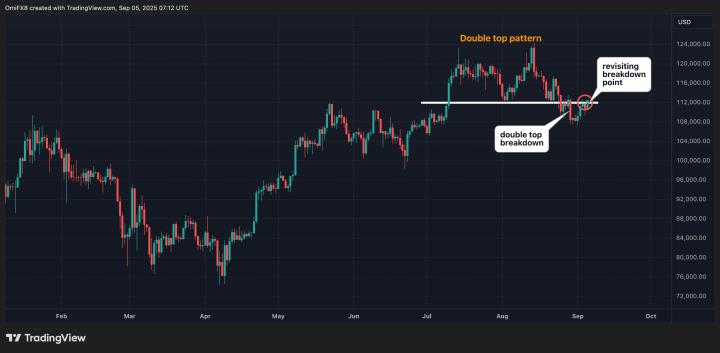Author: Will Awang
For some, Stripe's acquisition of stablecoin API service provider Bridge for $110 million may seem like an unexpected move. But the fact is, stablecoins are sweeping the globe, with year-over-year growth rates exceeding 50%, and their global transaction settlement volume is already more than twice that of Visa.
As the saying goes, "the first duck knows the water is warm," and as one of the three major payment giants in the US, Stripe has been frantically experimenting with "Pay with Crypto" this year, and has finally placed a big bet. The acquisition of the 2-year-old stablecoin API company Bridge.xyz for $110 million has created the largest acquisition deal in the crypto industry.
This article will start with stablecoins, then look at Bridge's business logic, and finally look at Stripe's acquisition logic.
I. The Rise of Stablecoins
The recent a16z Crypto State of Crypto Report 2024 has clearly stated that stablecoins have become one of the most obvious "killer applications" in the Web3 field. Driven by the widespread adoption of smartphones and the implementation of blockchain technology, stablecoins may become the greatest financial empowerment movement in human history.
Stablecoins make value transfer simple, with their quarterly transaction volume already more than double Visa's $3.9 trillion, settling trillions of dollars in assets annually, fully demonstrating their practicality. Furthermore, measured by daily active addresses, stablecoins account for nearly a third, or 32%, of daily cryptocurrency usage, second only to decentralized finance (DeFi) at 34%.
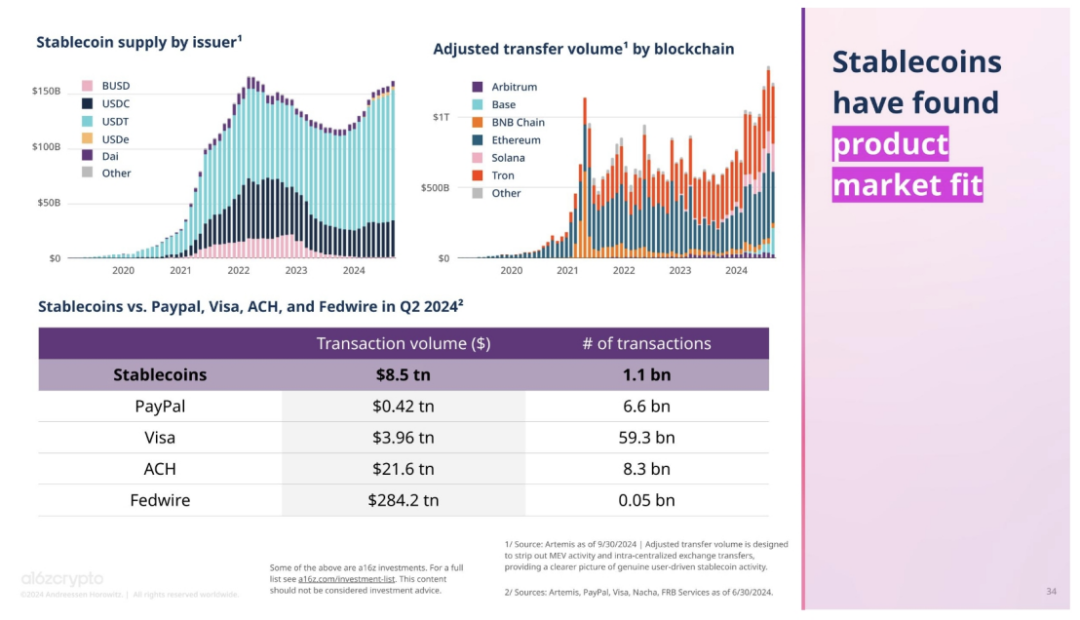
(State of Crypto Report 2024: New data on swing states, stablecoins, AI, builder energy, and more)
Additionally, according to Visa's stablecoin report, the total supply of stablecoins is around $170 billion. They settle trillions of dollars in assets annually. There are around 20 million addresses on-chain that transact in stablecoins each month. Over 120 million on-chain addresses hold non-zero stablecoin balances. These numbers all indicate that stablecoins are a currency running in parallel to the traditional financial infrastructure - just five years ago, it was starting from near zero.
There are also some crazy stablecoin statistics:
Stablecoins are now the sixth-largest buyer of US Treasuries;
30% of cross-border remittances are done through stablecoins;
Major companies like Visa, PayPal, Square, and Mastercard all have stablecoin projects;
SWIFT and some sovereign nations are also exploring the utility of stablecoin payments.
The use of stablecoins for non-crypto purposes is emerging, such as remittances, cross-border payments, payroll, trade settlement, and merchant settlement.
II. What is Bridge
Bridge, founded by entrepreneurs Sean Yu and Zach Abrams, is a stablecoin API engine that provides software tools to help companies accept stablecoin payments. The two founders previously sold their Venmo competitor Evenly to Block in 2013, and Abrams was also a former senior employee at Coinbase.
Bridge's Orchestration API is an API that integrates stablecoin receipt and payment into the existing business of Web2 companies, with Bridge handling all the compliance, regulatory, and technical complexities.
Bridge's Issuance API can help users issue their own stablecoins and provide an investment option currently yielding 5% on US Treasuries to improve capital utilization.
This set of APIs, combined with Bridge's own 1) stablecoin cross-chain transactions, 2) fiat/crypto on and off-ramps, and 3) virtual bank accounts provided by Leed Bank, can help Web2 users use stablecoins for receipt and payment more conveniently, with a smoother, seamless user experience.
Bridge states that using its API can transfer funds globally in minutes, seamlessly send stablecoin payments, convert local fiat currencies to stablecoins, and provide US dollar and Euro accounts for global consumers and businesses to save and spend in US dollars and Euros.
This is not a major innovation in essence, but Bridge's strength lies in making the interaction flow more convenient for Web2 users.
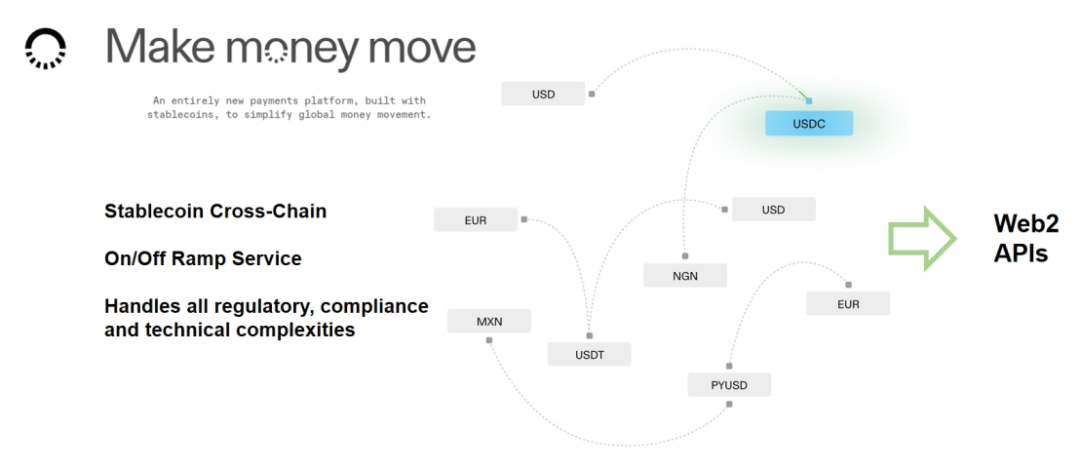
(https://www.bridge.xyz/#secSolution)
According to the Foresight News article "What is Bridge, the company Stripe acquired for $110 million?", Bridge has attracted many clients, including SpaceX. According to Fortune magazine, SpaceX uses Bridge to collect payments in different currencies in different jurisdictions and then transfer them to its global treasury through stablecoins.
Bridge has also partnered with crypto companies like the Stellar blockchain network and the Bitcoin payment app Strike to provide infrastructure for their own stablecoin payment features. Additionally, Coinbase has adopted Bridge's services to support transfers between Tether on Tron and USDC on Base. Statistics show that Bridge has processed over $5 billion in annual payments.
According to Forbes, Bridge had previously raised $58 million from investors, including a $40 million Series A round when the company was valued at $200 million. Investors included Sequoia Capital, Ribbit Capital, Index Ventures, Haun Ventures, and 1 confirmation. This time, the $110 million acquisition price represents a 5.5x premium, and is also Stripe's largest acquisition ever, as well as the largest acquisition deal in the crypto industry to date.
The $110 million acquisition price is not considered crazy, compared to the multi-billion dollar valuations of crypto protocols, where the only exit liquidity is to dump worthless governance tokens onto the market.
III. Stripe and Bridge's Collaboration
Stripe's collaboration with Bridge is essentially a continuation of the rise of stablecoins, and their integration can further help Stripe's "Pay With Crypto" strategy take shape, allowing Stripe to handle stablecoins more easily and making transactions more transparent and secure.

(x.com/Stablecoin/status/1848390039975469094)
Let's look at Bridge's latest announcement:
"Bridge and Stripe will work together to accelerate the adoption and utility of tokenized dollars, making it easier for everyone in the world to move, store, and spend money.
When we launched our API 18 months ago, the world was very different. Many were questioning the utility of the entire digital asset space, and stablecoins were impacted as well. Regulators, banks, and fintech companies were unable or unwilling to deeply engage with this new medium of exchange.
But since then, some of the largest global financial institutions, like Visa and SWIFT, have started natively supporting stablecoins. Policymakers around the world are working to provide clarity and support for stablecoin infrastructure, recognizing the strategic importance of this technology to the current financial system.
Behind the scenes, stablecoin adoption and usage is accelerating rapidly.
Soon after launch, several cross-border payment companies integrated our API, proving stablecoins could be used to make global money movement faster and cheaper. Then we partnered with government agencies to disburse aid funds, supporting thousands of frontline workers in Latin America. After that, we built Virtual Accounts to enable fintech companies like Dolar App and Chipper Cash to let global consumers and businesses hold and spend US dollars.
Through each use case, we've proven to ourselves and to the outside world that stablecoins can become the core global money movement infrastructure, representing a new payments platform. This isn't because consumers or businesses inherently want 'crypto', but because stablecoins solve key financial problems. They make money more fluid to move, more economical to hold, and cheaper to remit.
Stripe and Bridge share a vision that our increasingly globalized world needs better money. Money that can flow across borders; that anyone in any country/region can freely use; and that can be remitted for nearly free.
Crucially, we both believe that major financial service transformations don't happen overnight. Change takes years of accumulation. Continuous product and platform improvements, and building trust with customers, regulators, and partners."
IV. Stripe's Crypto Roadmap
Previously, on October 10th, Stripe announced the reintroduction of crypto payment gateway (Pay With Crypto) for US businesses, allowing US merchants to:
1. Accept USDC and USDP (Crypto Payin) from over 150 countries through Ethereum, Solana and Polygon;
2. Businesses/merchants can receive payouts in USD (Crypto payouts);
3. Integrated for checkout, element payment components, payment intent APIs, and soon to be integrated for company subscription features.
Stripe was the first major payment company to offer Bitcoin payments in 2014. However, due to long confirmation times, high fees, and price volatility, the feature was gradually reduced by 2018 as demand declined.
However, this is not the first time Stripe has integrated crypto services in recent months. In July this year, Stripe's EU company allowed users to buy cryptocurrencies like BTC, ETH and SOL.
In June this year, Stripe also signed a partnership with Coinbase, where Stripe will integrate Coinbase's Base Layer 2 into its crypto payment products, and Coinbase will allow users to use Stripe's fiat-to-crypto onramp to buy crypto in the Coinbase wallet (Stripe Fiat-to-Crypto Onramp).
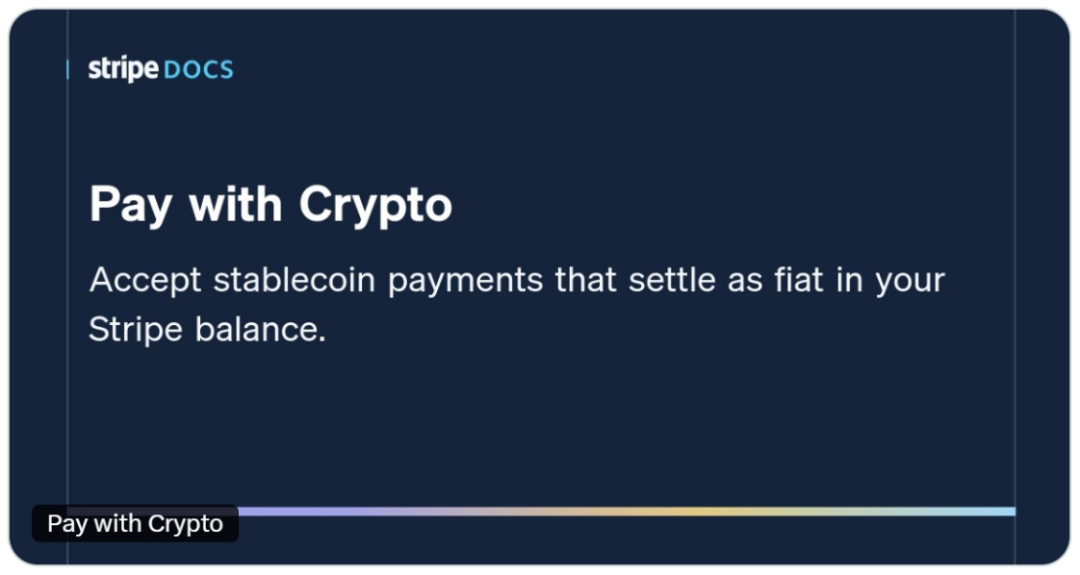
(docs.stripe.com/crypto/pay-with-crypto)
The essence of Stripe's business (whether it's acquiring or transferring) is: 1) On/Off Ramp; 2) Cross-chain settlement of Crypto / Stablecoins.
Therefore, for the acquisition of Bridge,
It can quickly fill the functional needs of this business;
Better serve Stripe's existing customers;
Expand beyond the Stripe ecosystem. Bridge's star customer is the US government. Yes, you read that right. Uncle Sam has also joined the stablecoin feast.
V. Response to Paypal PYUSD
When I wrote the "Web3 Payment Comprehensive Report: Industry Giants' Full-Scale Assault, Poised to Change the Existing Crypto Market Landscape" last October, I was still considering the specific utility and adoption of stablecoin payments, and now several major payment giants have already jumped in.
After first issuing its stablecoin PYUSD on Ethereum last August, Paypal also launched PYUSD on Solana in June this year. Outside of Paypal's own ecosystem, it is also actively promoting the PYUSD developer ecosystem.
According to DeFilama data, in August this year, PYUSD's market share on Solana was 64%, while on Ethereum it was only 36%. PYUSD's total market cap reached $1 billion in August.
Paypal has previously articulated the evolutionary path of stablecoin payments towards Mass Adoption:
Concept introduction brings cognitive awakening (Awareness through Introduction)
Integration achieves payment utility (Utility through Integration)
Stablecoin payments are ubiquitous (Ubiquity through Assimilation)
Clearly, it is currently in the second stage and progressing towards the third stage.
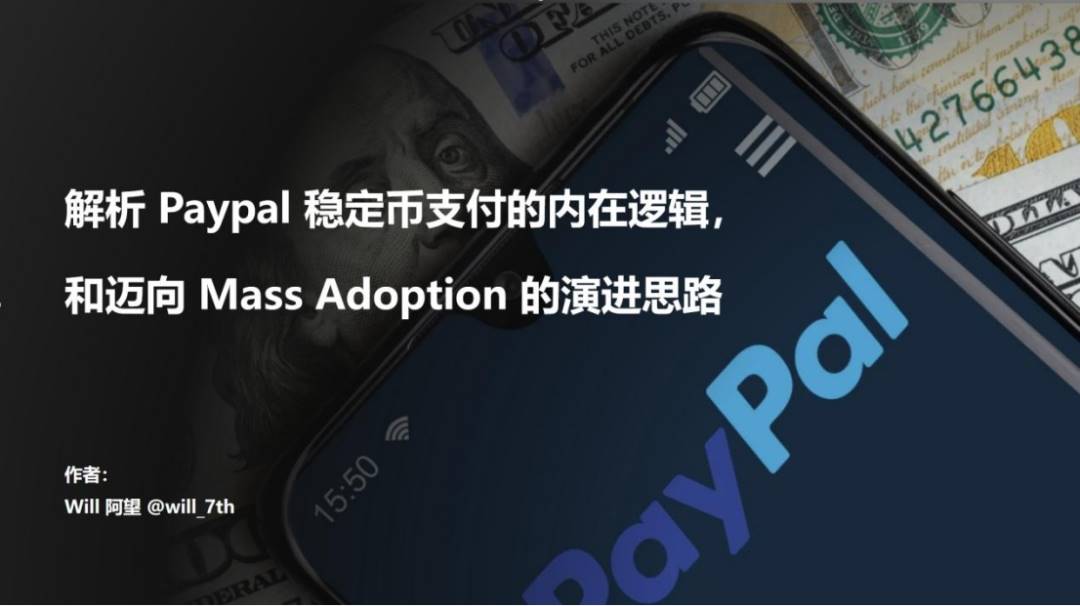 (Analyzing the inherent logic of Paypal's stablecoin payments and its evolutionary path towards Mass Adoption)
(Analyzing the inherent logic of Paypal's stablecoin payments and its evolutionary path towards Mass Adoption)
Another payment giant, Block (Square) led by Jack Dorsy, is also a faithful believer in Bitcoin, holding 8,027 Bitcoins, and has also made many deployments in the Crypto field.
VI. In Conclusion
As Anna @gizmothegizzer said, in the land of the blind, the one-eyed man is king. And in the crypto field, the company with the most arcane APIs and the best personal connections may be the emperor. My first reaction is Tether, and Bridge may also be one of them.
We are just getting started.
Future M&A deals will be even crazier.






